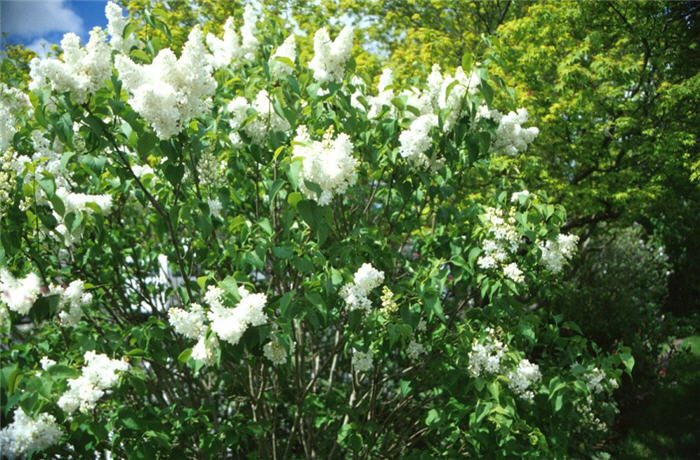| Botanical Name: Syringa vulgaris | |
| Common Name: Common Lilac |

-
Anatomy
-
Culture
-
Design
Plant Type
Shrub
Height Range
3-6', 12-25'
Flower Color
Blue, Lavender, Pink, Purple, White
Flower Season
Spring
Leaf Color
Green, Dark Green
Bark Color
Brown
Fruit Color
n/a
Fruit Season
n/a
Sun
Full, Half
Water
Low
Growth Rate
Moderate
Soil Type
Sandy, Clay, Loam, Rocky, Unparticular
Soil Condition
Average, Rich, Poor, Well-drained
Soil pH
Acid, Neutral, Basic
Adverse Factors
n/a
Design Styles
English Cottage, Meadow, Woodland
Accenting Features
Fragrance, Showy Flowers, Specimen, Standard
Seasonal Interest
Spring
Location Uses
Background, Shrub Border, Foundation
Special Uses
Cut Flowers, Erosion Control, Hedge, Screen, Wind Break, Fire Resistant
Attracts Wildlife
n/a
Information by: Stephanie Duer
Photographer: Steve Mullany, Connon N.
Photographer: Steve Mullany, Connon N.
-
Description
-
Notes
Common Lilac grow to a heights ranging from 8 to 18 feet, and equally wide, depending on cultivar. The dark green leaves are roundish, oval and pointed. In the spring, clusters of fragrant flowers are borne. The plant requires full sun for proper growth. Lilacs are available in a range of colors in the whites, pinks, mauves, violets, and purples. Once established, lilacs are tough shrubs and make great backgrounds.
Grow in well drained soil in full sun. Tolerates a range of soil types, but best growth occurs in sandy-loam or clay-loam soils. Lilacs sometimes don't bloom, and it is usually because it was pruned too early or too late in the season, or it's getting too much nitrogen fertilizer. Lilacs bloom on old wood, so prune immediately after bloom, as buds for the following year begin to set practically as the flowers fade. For tips on pruning, see Guides.